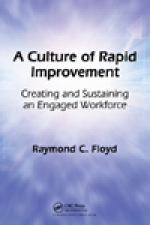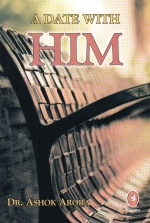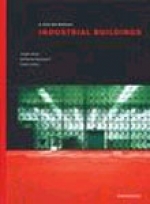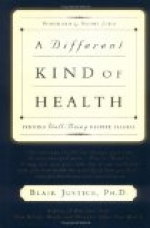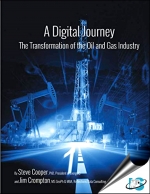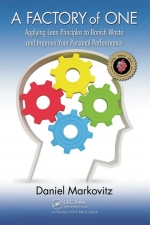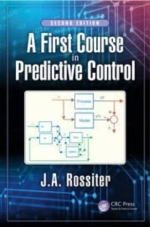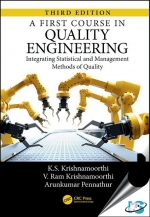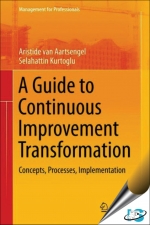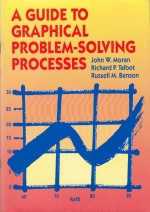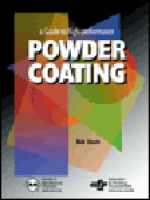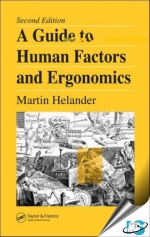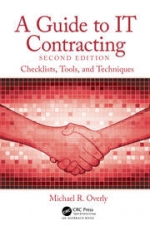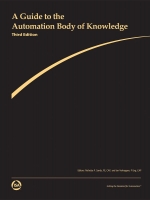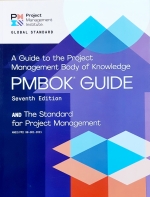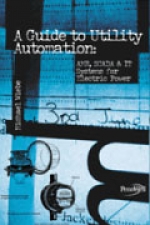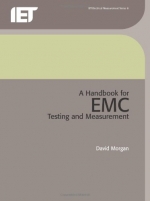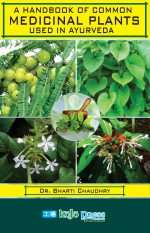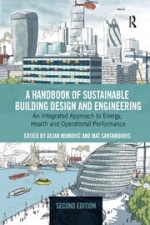Site Breadcrumb
Total Record : 10230
ISBN: 1878707183 / 9781878707185
Year: 1994
Availability: In Stock mohan- nhell ...
ISBN: 0873896777 / 9781563273780
Year: 2008
Availability: In Stock
A Culture of Rapid Improvement is intended for those leaders seeking to encourage dramatic improvement within their organizations. It shows these change agents how they can— Develop the shared values and beliefs that serve as the foundation for a dynamic culture Engage all employees to join the new culture and provide opportunities for these stakeholders to initiate and participate in improvement Measure, evaluate, and manage the performance of the new cultureFilled with lessons garnered from practical examples, this text is based on Raymond C. Floyd's 40 years of industrial management experience, including his more than 20 years at Exxon Mobil. He is the winner of a Shingo Prize and also holds the unique distinction of having led businesses from two different industries that were both recognized by IndustryWeek magazine as being among the Best Plants in America.
mohan- nA Culture of Rapid Improvement is intended for those leaders seeking to encourage dramatic improvement within their organizations. It shows these change agents how they can— Develop the shared values and beliefs that serve as the foundation for a dynamic culture Engage all employees to join the new culture and provide opportunities for these stakeholders to initiate and participate in improvement Measure, evaluate, and manage the performance of the new cultureFilled with lessons garnered from practical examples, this text is based on Raymond C. Floyd's 40 years of industrial management experience, including his more than 20 years at Exxon Mobil. He is the winner of a Shingo Prize and also holds the unique distinction of having led businesses from two different industries that were both recognized by IndustryWeek magazine as being among the Best Plants in America.
hell ...ISBN: 9382025146 / 9789382025146
Year: 2012
Availability: Out of Stock mohan- nhell ...
| Buy This Item |
| List Price: ` 150 |

Notify Me |
ISBN: 376432175X / 9783764321758
Year: 2004
Availability: Out of Stock
Building structures to house the logistical and manufacturing processes of industry is one of the largest and most widespread architectural assignments. The complex functional requirements are often fulfilled by typifies or modular solutions. The organization of industrial processes together with the wide range of designs and building methods are clearly and practically treated in this design atlas. A systematic section presents the typology, the technical and logistical elements of industrial building. In the subsequent section, some 70 designs are described and analysed. Special emphasis is placed on those functions and procedures that inform the design such as production, montage, storage and distribution. Jürgen Adam is Director of the Institute for Design and Construction at the University of Stuttgart. As an architect and teacher he has followed closely developments in international industrial building, as have the contributing authors, among others Gunther Henn, Klaus Daniels and Fritz Haller.mohan- n
Building structures to house the logistical and manufacturing processes of industry is one of the largest and most widespread architectural assignments. The complex functional requirements are often fulfilled by typifies or modular solutions. The organization of industrial processes together with the wide range of designs and building methods are clearly and practically treated in this design atlas. A systematic section presents the typology, the technical and logistical elements of industrial building. In the subsequent section, some 70 designs are described and analysed. Special emphasis is placed on those functions and procedures that inform the design such as production, montage, storage and distribution. Jürgen Adam is Director of the Institute for Design and Construction at the University of Stuttgart. As an architect and teacher he has followed closely developments in international industrial building, as have the contributing authors, among others Gunther Henn, Klaus Daniels and Fritz Haller.hell ...
| Buy This Item |
| List Price: € 90.95 |

Notify Me |
ISBN: 0960537643 / 9780960537648
Year: 1998
Availability: Out of Stock
Well documented, well-researched, and well-written, this book concerns people who have a sense of well-being even though they are sick or disabled. Their perspective is certain to help even people with incurable diseases or disabilities acquire "a different kind of health".
mohan- nWell documented, well-researched, and well-written, this book concerns people who have a sense of well-being even though they are sick or disabled. Their perspective is certain to help even people with incurable diseases or disabilities acquire "a different kind of health".
hell ...| Buy This Item |
| List Price: $ 22 |

Notify Me |
ISBN: 1791890903 / 9781791890902
Year: 2019
Availability: Out of Stock
It is apparent to everyone within the Industry that significant changes are underway. These changes are being driven by the need to operate more efficiently and with fewer people. Picture a general flow of getting more for less, but on steroids! A catalyst for this change has been the application of digital technology, wherein lies a new focus on data science and analytics. This is starting to result in real and significant improvements to overall business performance for some operators. While big data and analytics get most of the attention, it is only one aspect of a broader movement that is popularly referred to as the Digital Transformation and which we have categorized as the Digital Oilfield 2.0; the next phase of the Digital Transformation. One critical aspect of the Digital Transformation that typically gets overlooked is the need for effective data management across the full Well life-cycle. The result of this lack of focus on the fundamentals is that many big data and analytics projects fail to deliver fully on the promised benefits with the occasional spectacular failure.
mohan- nIt is apparent to everyone within the Industry that significant changes are underway. These changes are being driven by the need to operate more efficiently and with fewer people. Picture a general flow of getting more for less, but on steroids! A catalyst for this change has been the application of digital technology, wherein lies a new focus on data science and analytics. This is starting to result in real and significant improvements to overall business performance for some operators. While big data and analytics get most of the attention, it is only one aspect of a broader movement that is popularly referred to as the Digital Transformation and which we have categorized as the Digital Oilfield 2.0; the next phase of the Digital Transformation. One critical aspect of the Digital Transformation that typically gets overlooked is the need for effective data management across the full Well life-cycle. The result of this lack of focus on the fundamentals is that many big data and analytics projects fail to deliver fully on the promised benefits with the occasional spectacular failure.
hell ...| Buy This Item |
| List Price: $ 75 |

Notify Me |
ISBN: 0367480115 / 9780367480110
Year: 2020
Availability: In Stock
Most business readers have heard of the Lean principles developed for factories - a set of tools and ideas that have enabled companies to dramatically boost quality by reducing waste and errors - producing more while using less. Yet until now, few have recognized how relevant these powerful ideas are to individuals and their daily work. Every person at a desk, drafting table, workstation, or operating table must (like a factory) deal with the challenge of reducing the waste that creeps into their work. The same Lean principles that have improved efficiencies on the factory floor can be just as powerful - in fact, far more so - in helping individuals boost personal performance.
A Factory of One: Applying Lean Principles to Banish Waste and Improve Your Personal Performance describes how you can foster a new mindset and improve your performance by applying Lean methods to your work. It translates powerful Lean tools such as visual management, flow, pull, 5S, and kaizen to your daily work, revealing how they can help to improve efficiency, reduce waste, and link you ever more closely to customer value. This practice will help you develop better self-awareness, more disciplined problem-solving skills, and the ability to self-correct errors.
This book not only provides the tools, but also teaches you how to find the root causes underlying your inefficiencies so you can eliminate them permanently. It will enable you to immediately improve personal productivity while developing the skills needed for continuous improvement. It includes real-world examples that illustrate how these principles have been successfully applied across a range of industries. Providing the perfect mix of what-to-do with why-to-do it, the text details a step-by-step approach to applying Lean principles to your work.
Most business readers have heard of the Lean principles developed for factories - a set of tools and ideas that have enabled companies to dramatically boost quality by reducing waste and errors - producing more while using less. Yet until now, few have recognized how relevant these powerful ideas are to individuals and their daily work. Every person at a desk, drafting table, workstation, or operating table must (like a factory) deal with the challenge of reducing the waste that creeps into their work. The same Lean principles that have improved efficiencies on the factory floor can be just as powerful - in fact, far more so - in helping individuals boost personal performance.
A Factory of One: Applying Lean Principles to Banish Waste and Improve Your Personal Performance describes how you can foster a new mindset and improve your performance by applying Lean methods to your work. It translates powerful Lean tools such as visual management, flow, pull, 5S, and kaizen to your daily work, revealing how they can help to improve efficiency, reduce waste, and link you ever more closely to customer value. This practice will help you develop better self-awareness, more disciplined problem-solving skills, and the ability to self-correct errors.
This book not only provides the tools, but also teaches you how to find the root causes underlying your inefficiencies so you can eliminate them permanently. It will enable you to immediately improve personal productivity while developing the skills needed for continuous improvement. It includes real-world examples that illustrate how these principles have been successfully applied across a range of industries. Providing the perfect mix of what-to-do with why-to-do it, the text details a step-by-step approach to applying Lean principles to your work.
ISBN: 1032339160 / 9781032339160
Year: 2022
Availability: 2 to 3 weeks
The book presents a significant expansion in depth and breadth of the previous edition. It includes substantially more numerical illustrations and copious supporting MATLAB code that the reader can use to replicate illustrations or build his or her own. The code is deliberately written to be as simple as possible and easy to edit. The book is an excellent starting point for any researcher to gain a solid grounding in MPC concepts and algorithms before moving into application or more advanced research topics. Sample problems for readers are embedded throughout the chapters, and in-text questions are designed for readers to demonstrate an understanding of concepts through numerical simulation.
mohan- nThe book presents a significant expansion in depth and breadth of the previous edition. It includes substantially more numerical illustrations and copious supporting MATLAB code that the reader can use to replicate illustrations or build his or her own. The code is deliberately written to be as simple as possible and easy to edit. The book is an excellent starting point for any researcher to gain a solid grounding in MPC concepts and algorithms before moving into application or more advanced research topics. Sample problems for readers are embedded throughout the chapters, and in-text questions are designed for readers to demonstrate an understanding of concepts through numerical simulation.
hell ...ISBN: 0367146568 / 9780367146566
Year: 2019
Availability: In Stock
This book is the leader among the new generation of text books on quality that follow the systems approach to creating quality in products and services; the earlier generations focused solely on parts of the system such as statistical methods, process control, and management philosophy. It follows the premise that the body of knowledge and tools documented by quality professionals and researchers, when employed in designing, creating and delivering the product will lead to product quality, customer satisfaction and reduced waste. The tools employed at the different stages of the product creation cycle are covered in this book using real world examples along with their theoretical bases, strengths and weaknesses.
This textbook can be used for training - from shop floor personnel to college majors in business and engineering to practicing professionals. Graduate students training as researchers in the quality field will also find useful material. The book has been used as the text for a Professional Series Massive Open Online Course offered by the Technical University of Munich on edX.org, through which tens of thousands of participants from all over the world have received training in quality methods. According to Professor Dr. Holly Ott, who chose the book for the course, the text is one of the main factors contributing to success of this MOOC.
The Third Edition has been fully revised to be friendly for self-study, reflects changes in the standards referenced such as ISO 9000, and includes new examples of application of statistical tools in health care industry.
This book is the leader among the new generation of text books on quality that follow the systems approach to creating quality in products and services; the earlier generations focused solely on parts of the system such as statistical methods, process control, and management philosophy. It follows the premise that the body of knowledge and tools documented by quality professionals and researchers, when employed in designing, creating and delivering the product will lead to product quality, customer satisfaction and reduced waste. The tools employed at the different stages of the product creation cycle are covered in this book using real world examples along with their theoretical bases, strengths and weaknesses.
This textbook can be used for training - from shop floor personnel to college majors in business and engineering to practicing professionals. Graduate students training as researchers in the quality field will also find useful material. The book has been used as the text for a Professional Series Massive Open Online Course offered by the Technical University of Munich on edX.org, through which tens of thousands of participants from all over the world have received training in quality methods. According to Professor Dr. Holly Ott, who chose the book for the course, the text is one of the main factors contributing to success of this MOOC.
The Third Edition has been fully revised to be friendly for self-study, reflects changes in the standards referenced such as ISO 9000, and includes new examples of application of statistical tools in health care industry.
ISBN: 1439880832 / 9781439880838
Year: 2012
Availability: Out of Stock
A Modern Framework Based on Time-Tested Material
A Functional Analysis Framework for Modeling, Estimation and Control in Science and Engineering presents functional analysis as a tool for understanding and treating distributed parameter systems. Drawing on his extensive research and teaching from the past 20 years, the author explains how functional analysis can be the basis of modern partial differential equation (PDE) and delay differential equation (DDE) techniques.
Recent Examples of Functional Analysis in Biology, Electromagnetics, Materials, and Mechanics
Through numerous application examples, the book illustrates the role that functional analysis-a classical subject-continues to play in the rigorous formulation of modern applied areas. The text covers common examples, such as thermal diffusion, transport in tissue, and beam vibration, as well as less traditional ones, including HIV models, uncertainty in noncooperative games, structured population models, electromagnetics in materials, delay systems, and PDEs in control and inverse problems. For some applications, computational aspects are discussed since many problems necessitate a numerical approach.
A Modern Framework Based on Time-Tested Material
A Functional Analysis Framework for Modeling, Estimation and Control in Science and Engineering presents functional analysis as a tool for understanding and treating distributed parameter systems. Drawing on his extensive research and teaching from the past 20 years, the author explains how functional analysis can be the basis of modern partial differential equation (PDE) and delay differential equation (DDE) techniques.
Recent Examples of Functional Analysis in Biology, Electromagnetics, Materials, and Mechanics
Through numerous application examples, the book illustrates the role that functional analysis-a classical subject-continues to play in the rigorous formulation of modern applied areas. The text covers common examples, such as thermal diffusion, transport in tissue, and beam vibration, as well as less traditional ones, including HIV models, uncertainty in noncooperative games, structured population models, electromagnetics in materials, delay systems, and PDEs in control and inverse problems. For some applications, computational aspects are discussed since many problems necessitate a numerical approach.
| Buy This Item |
| List Price: £ 89.99 |
| Discount: 10% |
| Offer Price: £ 80.99 |

Notify Me |
ISBN: 3642359035 / 9783642359033
Year: 2013
Availability: 45-60 days
This book enables enterprise business leaders - from CEOs to supervisors - to understand what "Continuous Improvement" is, why it is probably the best answer to improved business performance in years, and how to put it to work in the unique environment of a specific organization. The book examines what is at the core of "Continuous Improvement" and delves deeper into the elements and constituents necessary to take an organization to the next level to ensure its continued, long-term existence. It provides guidance to enterprise management and to professionals engaged in the implementation of a "Continuous Improvement" initiative and enables them to structure and manage its implementation successfully. It also provides tools to quickly assess where an enterprise business stands in terms of strategic management and "Continuous Improvement".%u200B
mohan- nThis book enables enterprise business leaders - from CEOs to supervisors - to understand what "Continuous Improvement" is, why it is probably the best answer to improved business performance in years, and how to put it to work in the unique environment of a specific organization. The book examines what is at the core of "Continuous Improvement" and delves deeper into the elements and constituents necessary to take an organization to the next level to ensure its continued, long-term existence. It provides guidance to enterprise management and to professionals engaged in the implementation of a "Continuous Improvement" initiative and enables them to structure and manage its implementation successfully. It also provides tools to quickly assess where an enterprise business stands in terms of strategic management and "Continuous Improvement".%u200B
hell ...ISBN: 1138120693 / 9781138120693
Year: 2016
Availability: 2 to 3 weeks.
This new edition of A Guide to Energy Management in Buildings begins by asking why we need to control energy use in buildings and proceeds to discuss how the energy consumption of a building can be assessed or estimated through an energy audit. It then details a range of interventions to reduce energy use and outlines methods of assessing the cost-effectiveness of such measures.
Topics covered include:
- where and how energy is used in buildings
- energy audits
- measuring and monitoring energy use
- techniques for reducing energy use in buildings
- legislative issues.
And new in this edition:
- the cooling of buildings
- fuel costs and smart metering
- and education and professional recognition.
It provides a template for instigating the energy-management process within an organization, as well as guidance on management issues such as employee motivation, and gives practical details on how to carry the process through. This book should appeal to building and facilities managers and also to students of energy management modules in FE and HE courses.
mohan- n
This new edition of A Guide to Energy Management in Buildings begins by asking why we need to control energy use in buildings and proceeds to discuss how the energy consumption of a building can be assessed or estimated through an energy audit. It then details a range of interventions to reduce energy use and outlines methods of assessing the cost-effectiveness of such measures.
Topics covered include:
- where and how energy is used in buildings
- energy audits
- measuring and monitoring energy use
- techniques for reducing energy use in buildings
- legislative issues.
And new in this edition:
- the cooling of buildings
- fuel costs and smart metering
- and education and professional recognition.
It provides a template for instigating the energy-management process within an organization, as well as guidance on management issues such as employee motivation, and gives practical details on how to carry the process through. This book should appeal to building and facilities managers and also to students of energy management modules in FE and HE courses.
hell ...ISBN: 0415675375 / 9780415675376
Year: 2012
Availability: In Stock
Geotechnical instrumentation is used for installation, monitoring and assessment on any sizeable project, particularly in urban areas, and is used for recording, controlled remedial work, and safety.
This unique and up-to-date book deals with the conceptual philosophy behind the use of instruments, and then systematically covers their practical use. It is divided into displacement dominated systems and stress recording systems. The limitations are discussed and the theoretical background for data assessment and presentation are covered in some detail, with some relevant background material in theoretical soil mechanics. Relevant advanced electronic techniques such as laser scanning in surveying and fibre-optics are also included and communication and data recovery systems are discussed.
This book is written for senior designers, consulting engineers, and major contractors who need a major introduction to the general purpose, availability, and analysis of field instruments before details of their own project can be progressed, and it serves as a textbook to any specialist geotechnical MSc or professional seminar course in which instrumentation forms a major part.
Geotechnical instrumentation is used for installation, monitoring and assessment on any sizeable project, particularly in urban areas, and is used for recording, controlled remedial work, and safety.
This unique and up-to-date book deals with the conceptual philosophy behind the use of instruments, and then systematically covers their practical use. It is divided into displacement dominated systems and stress recording systems. The limitations are discussed and the theoretical background for data assessment and presentation are covered in some detail, with some relevant background material in theoretical soil mechanics. Relevant advanced electronic techniques such as laser scanning in surveying and fibre-optics are also included and communication and data recovery systems are discussed.
This book is written for senior designers, consulting engineers, and major contractors who need a major introduction to the general purpose, availability, and analysis of field instruments before details of their own project can be progressed, and it serves as a textbook to any specialist geotechnical MSc or professional seminar course in which instrumentation forms a major part.
ISBN: 0873890795 / 9780873890793
Year: 1990
Availability: In Stock
A Strong graphic is worth more than 1,000 words! This immediately useful overview of practical graphical tools and techniques will show you exactly how to best communicate your message. Its user-friendly noncomputer techniques are widely applicable to all types of business and educational environments. You'll learn how to discriminate between qualitative and quantitative data and between discrete and continuous measurements, facilitating the development of correct graphs and charts the very first time! You'll also develop team process skills and analytical techniques.
Techniques include: brainstorming, Pareto analysis, force field analysis, fishbone diagrams, and project management tools.
A Strong graphic is worth more than 1,000 words! This immediately useful overview of practical graphical tools and techniques will show you exactly how to best communicate your message. Its user-friendly noncomputer techniques are widely applicable to all types of business and educational environments. You'll learn how to discriminate between qualitative and quantitative data and between discrete and continuous measurements, facilitating the development of correct graphs and charts the very first time! You'll also develop team process skills and analytical techniques.
Techniques include: brainstorming, Pareto analysis, force field analysis, fishbone diagrams, and project management tools.
ISBN: 0727734814 / 9780727734815
Year: 2007
Availability: Out of Stock
Written against the backdrop of increasing fines for health and safety offences against companies and individuals, this guide provides straightforward advice on how to avoid or deal with health and safety prosecutions in a practical manner.
The authors explain the law surrounding health and safety prosecutions as detailed by the Health and Safety at Work Act 1974 and the Management of Health and Safety at Work Regulations 1999, and analyse the practical issues involved in such prosecutions.
Written against the backdrop of increasing fines for health and safety offences against companies and individuals, this guide provides straightforward advice on how to avoid or deal with health and safety prosecutions in a practical manner.
The authors explain the law surrounding health and safety prosecutions as detailed by the Health and Safety at Work Act 1974 and the Management of Health and Safety at Work Regulations 1999, and analyse the practical issues involved in such prosecutions.
| Buy This Item |
| List Price: £ 59.75 |

Notify Me |
ISBN: 0872635473 / 9780872635470
Year: 2002
Availability: 45-60 days
"A Guide to High-performance Powder Coating" examines industry costs, performance, and environmental effects. The text looks at technical advancements made in powder coating procedures and equipment, and it explains these concepts for those in the industry trying to maintain a competitive edge. Powder coating materials and their performance properties are looked at along with electrostatic theories, curing, and ovens. The book looks at design and construction aspects of the pretreatment washer system and explores monitoring and maintaining pretreatment systems, along with the fundamentals of avoiding pretreatment failure. Other topics include equipment hoppers and feeders, powder booths, applications, operating conditions, and safety issues. Performance testing, including industry standards and chemical resistance, are explained. In addition, troubleshooting procedures when a product is off color, off gloss, or exhibits poor adhesion qualities is presented.
mohan- n"A Guide to High-performance Powder Coating" examines industry costs, performance, and environmental effects. The text looks at technical advancements made in powder coating procedures and equipment, and it explains these concepts for those in the industry trying to maintain a competitive edge. Powder coating materials and their performance properties are looked at along with electrostatic theories, curing, and ovens. The book looks at design and construction aspects of the pretreatment washer system and explores monitoring and maintaining pretreatment systems, along with the fundamentals of avoiding pretreatment failure. Other topics include equipment hoppers and feeders, powder booths, applications, operating conditions, and safety issues. Performance testing, including industry standards and chemical resistance, are explained. In addition, troubleshooting procedures when a product is off color, off gloss, or exhibits poor adhesion qualities is presented.
hell ...ISBN: 0415282489 / 9780415282482
Year: 2006
Availability: 2 to 3 weeks
Completely revised and updated, A Guide to Human Factors and Ergonomics, Second Edition presents a comprehensive introduction to the field. Building on the foundation of the first edition, titled Guide to Ergonomics of Manufacturing, the new title reflects the expanded range of coverage and applicability of the techniques you will find in the second edition. Each and every chapter contains new material and some have been entirely rewritten. Drawing on the author’s experience in both teaching and industry, the book lays to rest the common myths and misconceptions that surround ergonomics.
Unlike most ergonomics and human factors books that emphasize the physical, this one gives a broad overview of cognitive as well as physical ergonomics. Written in an accessible style, it presents a systems approach to human factors and ergonomics that leads to complete understanding. The author demonstrates how to collect data on users and operators and how to convert the data to good design, and offers a practical guide to the design and analysis of systems. Design oriented, systems oriented, and results oriented, this text provides the tools needed to solve systems problems and develop adequate design solutions.
Completely revised and updated, A Guide to Human Factors and Ergonomics, Second Edition presents a comprehensive introduction to the field. Building on the foundation of the first edition, titled Guide to Ergonomics of Manufacturing, the new title reflects the expanded range of coverage and applicability of the techniques you will find in the second edition. Each and every chapter contains new material and some have been entirely rewritten. Drawing on the author’s experience in both teaching and industry, the book lays to rest the common myths and misconceptions that surround ergonomics.
Unlike most ergonomics and human factors books that emphasize the physical, this one gives a broad overview of cognitive as well as physical ergonomics. Written in an accessible style, it presents a systems approach to human factors and ergonomics that leads to complete understanding. The author demonstrates how to collect data on users and operators and how to convert the data to good design, and offers a practical guide to the design and analysis of systems. Design oriented, systems oriented, and results oriented, this text provides the tools needed to solve systems problems and develop adequate design solutions.
ISBN: 0367767252 / 9780367767259
Year: 2023
Availability: 2 to 3 weeks.
Even leading organizations with sophisticated IT infrastructures and teams of lawyers can find themselves unprepared to deal with the range of issues that can arise in IT contracting. Written by two seasoned attorneys, A Guide to IT Contracting: Checklists, Tools, and Techniques distills the most critical business and legal lessons learned through the authors’ decades of experience drafting and negotiating IT-related agreements.
In a single volume, readers can quickly access information on virtually every type of technology agreement. Structured to focus on a particular type of IT agreement, each chapter includes a checklist of essential terms, a brief summary of what the agreement is intended to do, and a complete review of the legal and business issues that are addressed in that particular agreement. Providing non-legal professionals with the tools to address IT contracting issues, the book:
- Contains checklists to help readers organize key concepts for ready reference
- Supplies references to helpful online resources and aids for contract drafting
- Includes downloadable resources with reusable checklists and complete glossary that defines key legal, business, and technical terms
Costly mistakes can be avoided, risk can be averted, and better contracts can be drafted if you have access to the right information. Filled with reader-friendly checklists, this accessible reference will set you down that path. Warning you of the most common pitfalls, it arms you with little-known tips and best practices to help you negotiate the key terms of your IT agreements with confidence and ensure you come out on top in your next contract negotiation.
mohan- n
Even leading organizations with sophisticated IT infrastructures and teams of lawyers can find themselves unprepared to deal with the range of issues that can arise in IT contracting. Written by two seasoned attorneys, A Guide to IT Contracting: Checklists, Tools, and Techniques distills the most critical business and legal lessons learned through the authors’ decades of experience drafting and negotiating IT-related agreements.
In a single volume, readers can quickly access information on virtually every type of technology agreement. Structured to focus on a particular type of IT agreement, each chapter includes a checklist of essential terms, a brief summary of what the agreement is intended to do, and a complete review of the legal and business issues that are addressed in that particular agreement. Providing non-legal professionals with the tools to address IT contracting issues, the book:
- Contains checklists to help readers organize key concepts for ready reference
- Supplies references to helpful online resources and aids for contract drafting
- Includes downloadable resources with reusable checklists and complete glossary that defines key legal, business, and technical terms
Costly mistakes can be avoided, risk can be averted, and better contracts can be drafted if you have access to the right information. Filled with reader-friendly checklists, this accessible reference will set you down that path. Warning you of the most common pitfalls, it arms you with little-known tips and best practices to help you negotiate the key terms of your IT agreements with confidence and ensure you come out on top in your next contract negotiation.
hell ...ISBN: 1941546919 / 9781941546918
Year: 2018
Availability: Out of Stock
This book is a key resource for anyone who is studying for the ISA Certified Automation Professional® (CAP®), ISA Certified Control Systems Technician® (CCST®), and/or Control Systems Engineer (CSE) exams. Edited by Nick Sands and Ian Verhappen and written by 38 leading experts from all aspects of automation, it provides a comprehensive overview of the most important automation concepts and processes, while also describing the technical skills required to implement them in today's industrial environment. This edition provides comprehensive information about all major topics in the broad field of automation including:
- Process and analytical instrumentation
- Continuous and batch control
- Control valves and final control elements
- Basic discrete, sequencing, and manufacturing control
- Advanced control
- Digital and analog communications
- Data management and system software
- Networking and security
- Safety and reliability
- System checkout, testing, startup, and troubleshooting
- Project management
Whether you are an engineer, manager, control systems integrator, student, or educator, you will turn to this book again and again as the ultimate source on what is encompassed by automation.
mohan- nThis book is a key resource for anyone who is studying for the ISA Certified Automation Professional® (CAP®), ISA Certified Control Systems Technician® (CCST®), and/or Control Systems Engineer (CSE) exams. Edited by Nick Sands and Ian Verhappen and written by 38 leading experts from all aspects of automation, it provides a comprehensive overview of the most important automation concepts and processes, while also describing the technical skills required to implement them in today's industrial environment. This edition provides comprehensive information about all major topics in the broad field of automation including:
- Process and analytical instrumentation
- Continuous and batch control
- Control valves and final control elements
- Basic discrete, sequencing, and manufacturing control
- Advanced control
- Digital and analog communications
- Data management and system software
- Networking and security
- Safety and reliability
- System checkout, testing, startup, and troubleshooting
- Project management
Whether you are an engineer, manager, control systems integrator, student, or educator, you will turn to this book again and again as the ultimate source on what is encompassed by automation.
hell ...| Buy This Item |
| List Price: $ 234 |

Notify Me |
ISBN: 1628256648 / 9781628256642
Year: 2021
Availability: Out of Stock
PMBOK® Guide is the go-to resource for project management practitioners. The project management profession has significantly evolved due to emerging technology, new approaches and rapid market changes. Reflecting this evolution, The Standard for Project Management enumerates 12 principles of project management and the PMBOK® Guide – Seventh Edition is structured around eight project performance domains.
This edition is designed to address practitioners' current and future needs and to help them be more proactive, innovative and nimble in enabling desired project outcomes.
This edition of the PMBOK® Guide :
- Reflects the full range of development approaches (predictive, adaptive, hybrid, etc.);
- Provides an entire section devoted to tailoring the development approach and processes;
- Includes an expanded list of models, methods, and artifacts;
- Focuses on not just delivering project outputs but also enabling outcomes; and
- Integrates with PMIstandards ™ for information and standards application content based on project type, development approach, and industry sector.
PMBOK® Guide is the go-to resource for project management practitioners. The project management profession has significantly evolved due to emerging technology, new approaches and rapid market changes. Reflecting this evolution, The Standard for Project Management enumerates 12 principles of project management and the PMBOK® Guide – Seventh Edition is structured around eight project performance domains.
This edition is designed to address practitioners' current and future needs and to help them be more proactive, innovative and nimble in enabling desired project outcomes.
This edition of the PMBOK® Guide :
- Reflects the full range of development approaches (predictive, adaptive, hybrid, etc.);
- Provides an entire section devoted to tailoring the development approach and processes;
- Includes an expanded list of models, methods, and artifacts;
- Focuses on not just delivering project outputs but also enabling outcomes; and
- Integrates with PMIstandards ™ for information and standards application content based on project type, development approach, and industry sector.
| Buy This Item |
| List Price: $ 99 |
| Offer Price: ` 7150 |

Notify Me |
ISBN: 0727757695 / 9780727757692
Year: 2014
Availability: Out of Stock
A Guide to the Reservoirs Act 1975 provides export Guidance on the application of the reservoirs Act 1975, reflecting ther current views and practices of the dam engineering profession.
This fully updated second edition incorporates the latest amendments to the Flood and Water Management Act, reflecting a more risk-based approach to reservoir regulation. These approaches include reducing the capacity at which a reservoir will be regulated fro 25,000m to 10,000m, and insuring that only these reservoirs assessed as a higher risk are subject to regulation.
A Guide to the Reservoirs Act 1975 provides export Guidance on the application of the reservoirs Act 1975, reflecting ther current views and practices of the dam engineering profession.
This fully updated second edition incorporates the latest amendments to the Flood and Water Management Act, reflecting a more risk-based approach to reservoir regulation. These approaches include reducing the capacity at which a reservoir will be regulated fro 25,000m to 10,000m, and insuring that only these reservoirs assessed as a higher risk are subject to regulation.
| Buy This Item |
| List Price: £ 81 |

Notify Me |
ISBN: 0878147675 / 9780878147670
Year: 2000
Availability: In Stock
Industry expert Michael Wiebe tells you how electricity is distributed, measured, and billed in order to find new solutions needed in an increasingly competitive market. He also gives you a review of U.S. deregulation and its precursors, and explains integrated meter reading, billing, CIS, call-center, and related systems as well as the probable evolution of these applications in the context of creating a competitive market.
mohan- nIndustry expert Michael Wiebe tells you how electricity is distributed, measured, and billed in order to find new solutions needed in an increasingly competitive market. He also gives you a review of U.S. deregulation and its precursors, and explains integrated meter reading, billing, CIS, call-center, and related systems as well as the probable evolution of these applications in the context of creating a competitive market.
hell ...ISBN: 0863417566 / 9780863417566
Year: 2007
Availability: In Stock
This major reference book is aimed at engineers and technical managers concerned with EMC (electromagnetic compatibility). It explains why EMC testing is necessary, what standards must be met, how such testing is carried out (and therefore how to prepare for it), what accuracy and repeatability can be expected, and when to test. For less than the cost of half a day's testing in a laboratory, with this book manufacturers of equipment can prepare for and interact with test houses on the basis of sound knowledge; thereby reducing the time and expense incurred prior to EMC approval.
A Handbook for EMC Testing and Measurement is concerned with most aspects of electromagnetic compatibility and addresses many of the technical and managerial issues which are of concern to designers and manufacturers of commercial and military electronic equipment. The primary focus of the book is on EMC testing. It discusses the numerous test methods in relation to the EMC Standards for which they are required. As the book has been written with the aim of being accessible to both technical staff and management, it has technical sections devoted to such issues as basic antenna theory and EMC testing practices, as well as chapters oriented towards management/project control, which are concerned with regulations and the EMC planning aspects of product development.
This major reference book is aimed at engineers and technical managers concerned with EMC (electromagnetic compatibility). It explains why EMC testing is necessary, what standards must be met, how such testing is carried out (and therefore how to prepare for it), what accuracy and repeatability can be expected, and when to test. For less than the cost of half a day's testing in a laboratory, with this book manufacturers of equipment can prepare for and interact with test houses on the basis of sound knowledge; thereby reducing the time and expense incurred prior to EMC approval.
A Handbook for EMC Testing and Measurement is concerned with most aspects of electromagnetic compatibility and addresses many of the technical and managerial issues which are of concern to designers and manufacturers of commercial and military electronic equipment. The primary focus of the book is on EMC testing. It discusses the numerous test methods in relation to the EMC Standards for which they are required. As the book has been written with the aim of being accessible to both technical staff and management, it has technical sections devoted to such issues as basic antenna theory and EMC testing practices, as well as chapters oriented towards management/project control, which are concerned with regulations and the EMC planning aspects of product development.
ISBN: 8193380576 / 9788193380574
Year: 2019
Availability: In Stock
Medicinal plants have long been used in traditional cultures all over the world and are increasingly becoming popular as natural alternatives to synthetic medicines. The high cost and side-effects of modern drugs, multiple drug-resistance and lack of curative treatment for chronic diseases has rekindled interest in the traditional systems of medicine. Ayurveda is the oldest and most widely practiced traditional system of India, known for its preventive, restorative and holistic mode of treatment. Many medicinal plants used in Ayurveda are effective against many chronic diseases of skin, hepatic disorders, rheumatic diseases, diabetes, hypertension, cancer, respiratory ailments, cognitive disorders and other immunological and lifestyle diseases. The traditional uses of many medicinal plants have been scientifically authenticated by several experimental studies on model animals, human cell lines and clinical trials.
The handbook provides illustrated descriptions of 30 common medicinal plants used in Ayurveda, including botanical names, names of the family, common English and Hindi names, the plant parts used, brief description of the plants, major phytochemicals, therapeutic potential and medicinal uses. The introductory chapter deals with the importance of medicinal plants in Traditional systems of medicine and gives a brief overview of the concepts and terminology of Ayurveda system of medicine. A special feature is a glossary that defines the medical terms that have been used in the book for easy comprehension. The handbook provides the reader valuable information about the traditional as well as current uses of selected medicinal plants. It is addressed to undergraduate and postgraduate students of botany, teachers, academicians, researchers, practitioners of traditional and alternative medicine and all those interested in herbal medicine. The book will generate interest in the rich diversity of medicinal plants used in the Ayurveda system of medicine and the importance of preventive, holistic healing in management of health and disease.
Medicinal plants have long been used in traditional cultures all over the world and are increasingly becoming popular as natural alternatives to synthetic medicines. The high cost and side-effects of modern drugs, multiple drug-resistance and lack of curative treatment for chronic diseases has rekindled interest in the traditional systems of medicine. Ayurveda is the oldest and most widely practiced traditional system of India, known for its preventive, restorative and holistic mode of treatment. Many medicinal plants used in Ayurveda are effective against many chronic diseases of skin, hepatic disorders, rheumatic diseases, diabetes, hypertension, cancer, respiratory ailments, cognitive disorders and other immunological and lifestyle diseases. The traditional uses of many medicinal plants have been scientifically authenticated by several experimental studies on model animals, human cell lines and clinical trials.
The handbook provides illustrated descriptions of 30 common medicinal plants used in Ayurveda, including botanical names, names of the family, common English and Hindi names, the plant parts used, brief description of the plants, major phytochemicals, therapeutic potential and medicinal uses. The introductory chapter deals with the importance of medicinal plants in Traditional systems of medicine and gives a brief overview of the concepts and terminology of Ayurveda system of medicine. A special feature is a glossary that defines the medical terms that have been used in the book for easy comprehension. The handbook provides the reader valuable information about the traditional as well as current uses of selected medicinal plants. It is addressed to undergraduate and postgraduate students of botany, teachers, academicians, researchers, practitioners of traditional and alternative medicine and all those interested in herbal medicine. The book will generate interest in the rich diversity of medicinal plants used in the Ayurveda system of medicine and the importance of preventive, holistic healing in management of health and disease.
ISBN: 103217854X / 9781032178547
Year: 2022
Availability: 2 to 3 weeks
The second edition of this authoritative textbook equips students with the tools they will need to tackle the challenges of sustainable building design and engineering. The book looks at how to design, engineer and monitor energy efficient buildings, how to adapt buildings to climate change, and how to make buildings healthy, comfortable and secure. New material for this edition includes sections on environmental masterplanning, renewable technologies, retrofitting, passive house design, thermal comfort and indoor air quality. With chapters and case studies from a range of international, interdisciplinary authors, the book is essential reading for students and professionals in building engineering, environmental design, construction and architecture.
mohan- nThe second edition of this authoritative textbook equips students with the tools they will need to tackle the challenges of sustainable building design and engineering. The book looks at how to design, engineer and monitor energy efficient buildings, how to adapt buildings to climate change, and how to make buildings healthy, comfortable and secure. New material for this edition includes sections on environmental masterplanning, renewable technologies, retrofitting, passive house design, thermal comfort and indoor air quality. With chapters and case studies from a range of international, interdisciplinary authors, the book is essential reading for students and professionals in building engineering, environmental design, construction and architecture.
hell ...



